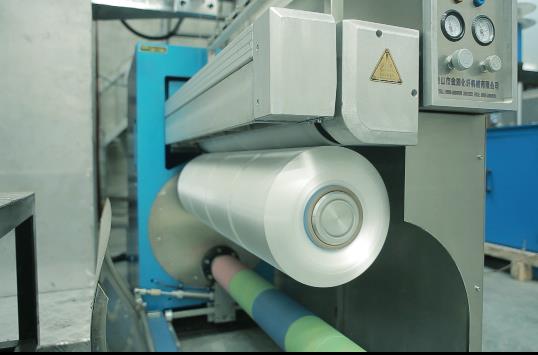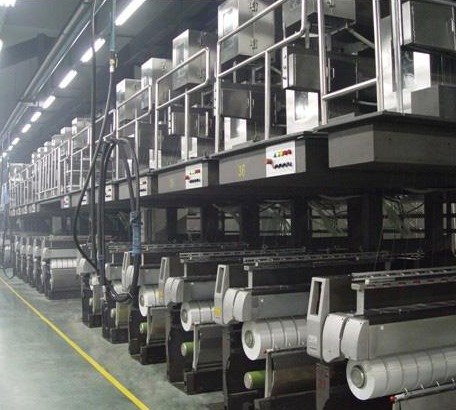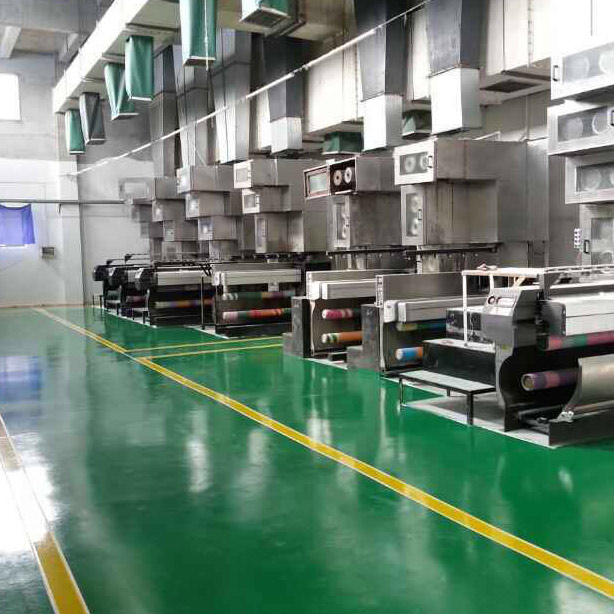- Polypropylene spinning machine
- Polypropylene FDY equipment
- Polyester POY spinning machine
- Polyamide FDY common and high strength equipment
- Polyester FDY equipment
- Polyester high strength equipment
- polyester、Polyamide、 Polypropylene BCF equipment
- Small spinning machine
- All kinds of spinning special parts
- Polypropylene FDY spinning machine is a key equipment for the production of high-performance fibers
- Several silk textile industry renewal projects in Shengze have started construction
- The Winter Solstice marks the rise of Yang energy. In Fubon spinning machines, the Winter Solstice code is revealed, a dialogue of craftsmanship spanning a thousand years
- The establishment conference of Guangzhou Modern Textile and Garment New Quality Productivity Research Institute and the co-construction conference of the textile industry innovation ecosystem were held
- The key points of control in the polypropylene FDY spinning machine process and their relationship with quality

- Contact:Mr. Huang Guofu
- Cel:0086-13901505556
- Fax:0086-519-83341119
- Email:czfb5556@126.com
- Add:No. 288-8 ChangLi Rd, Huangli Town, Changzhou, JS PRV.
According to the General Administration of Customs statistics, in the first five months of this year, the national textile and apparel exports of 118.2 billion US dollars, a year-on-year decrease of 5.3% (in renminbi terms, an increase of 2.1%), the decline has expanded from January to April this year. Among them, textile exports were 56.83 billion US dollars, down 9.4% year-on-year (2.4% year-on-year decrease in RMB); Garment exports were US $61.37 billion, down 1.1% year-on-year (up 6.6% in RMB terms).
The emergency closure of key ports in the United States may affect trade in Asia
One wave followed another. Now, the U.S. transportation industry is facing another major test. According to Bloomberg reported that the past week has plagued the West Coast port operation disruption has not stopped, the US port of Seattle 10 began to completely shut down port cargo operations.
Major ports closer to Asia were shut down
On June 10, local time, the Pacific Maritime Association (PMA) announced that the Port of Seattle was closed because the International Longline and Warehouse Workers Union (ILWU) refused to send workers to work at the container terminal.
At present, the labor dispute around the West Coast of the United States port is still ongoing. The PMA warned that a large number of U.S. exports are currently being held up at docks. West Coast port operations are critical to the U.S. supply chain, with West Coast port trade accounting for about 12% of U.S. GDP.
The Port of Seattle is one of the seaborne ports in North America that U.S. agricultural exporters rely on to ship their produce and grain. About 40 percent of jobs in Washington State, where the port is located, are trade-related.
At the same time, the Port of Seattle is also the closest port to the Far East of the United States, and the main trading countries through the port in 2022 with the United States include China, Japan, Vietnam, South Korea, Thailand, Indonesia, Malaysia, the Philippines and India and many other Asian countries.
Labour unrest threatens ports across America's west coast
It is worth mentioning that the closure of the Port of Seattle is only a microcosm, since June 2, from California to Washington state across the US West Coast ports, due to pay disputes, longshoremen in key positions have slowed down work, and some workers have even gone on strike.
Shipping officials at the ports of Los Angeles and Long Beach, the nation's busiest container ports, warned that up to 28 ships scheduled to arrive this week were expected to face delays unless dockworkers resumed operations.
If the two sides don't reach an agreement soon, they may have to call on the Biden administration to intervene, according to people familiar with the matter.
On June 9, the U.S. Chamber of Commerce asked the Biden administration to appoint an independent mediator to help the two sides reach an agreement before the delay begins to affect U.S. supply chains. Business groups representing retailers and manufacturers are also calling on the White House to intervene. If the mediator is unable to guide the two sides to an agreement, the Biden administration would be able to invoke a federal law to force the longshoremen to resume normal operations.
Textile and apparel exports came under pressure in May, falling 13.1 percent from a year earlier
In May, China's textile and apparel exports to the world were 25.32 billion US dollars, down 13.1% year on year (down 6.7% in RMB terms). Among them, textile exports were 12.02 billion US dollars, down 14.1% year-on-year (7.8% year-on-year decrease in RMB); Garment exports were $13.3 billion, down 12.2% year on year (down 5.7% in yuan terms).
At present, the risk of global economic recession is intensifying, especially the weak market demand in developed countries. In its latest economic outlook released on June 6, the World Bank predicts that growth in advanced economies will slow from 2.6% in 2022 to 0.7% this year. Since the fourth quarter of last year, international clothing brands are generally in the destocking stage, and it is expected that the brand inventory situation and demand recovery will be improved to a certain extent in the second half of this year, but the overall export pressure of China's textile and apparel foreign trade enterprises is still large.
Declaration: This article is organized from the network, copyright belongs to the original author;
If there is infringement, please inform in time and delete after verification.
Changzhou Fubon Chemical Fiber Machinery Factory Technical is a professional manufacturing supplier that develops and produces various chemical fiber machinery as its main body. It integrates scientific research, development, production and sales. In order to meet market demand, our factory has established a comprehensive chemical fiber spinning silk silk Experimental base provides customers with good equipment and technical services. We mainly provide customers with various chemical fiber sets of equipment such as polyester, Parion, nylon, aminoly, and undertake various related equipment transformation projects and custom services.
- Several silk textile industry renewal projects in Shengze have started construction
- Polypropylene FDY spinning machine is a key equipment for the production of high-performan
- The Winter Solstice marks the rise of Yang energy. In Fubon spinning machines, the Winter
- The establishment conference of Guangzhou Modern Textile and Garment New Quality Productiv
- The key points of control in the polypropylene FDY spinning machine process and their rela
- A Guide for Managers to Break Through: Empowerment Rather than Control: Helping Enterprise
- The 2025 Textile and Garment Innovation Annual Conference and the Gongqingcheng Down Indus
- The technological upgrade of polypropylene FDY spinning machines empowers the production o
- Textile News: Full-chain Efforts + Cross-border Breakthroughs + Talent Foundation - The Te
- The 2025 China Home Textile Fashion Innovation Conference grandly kicked off in Binzhou




